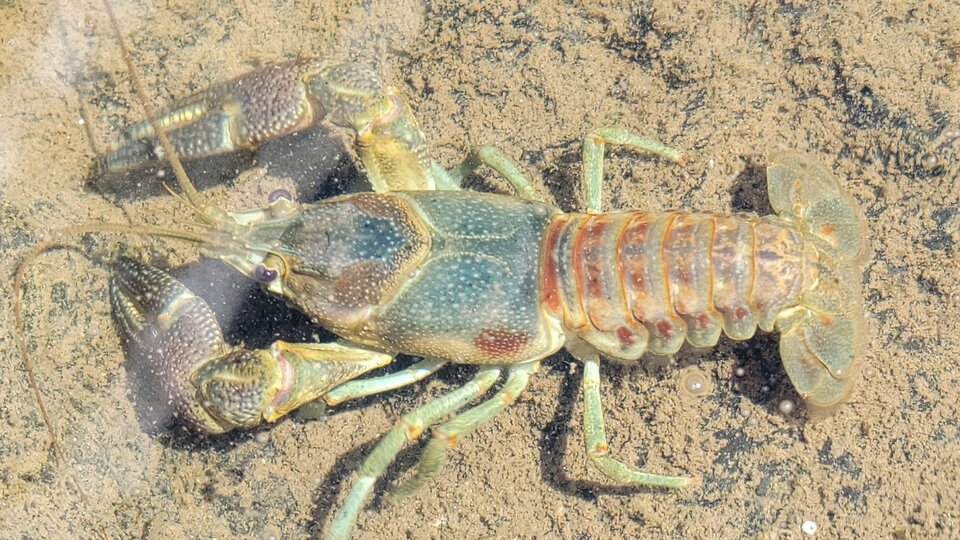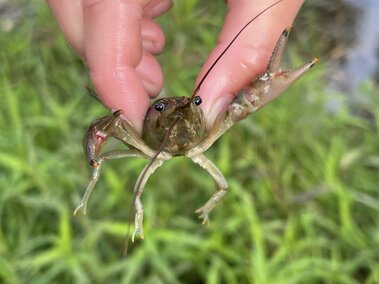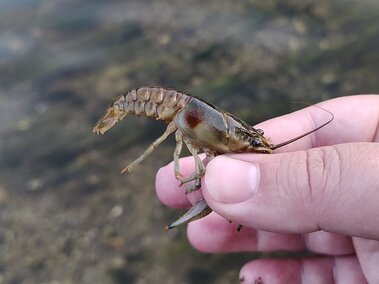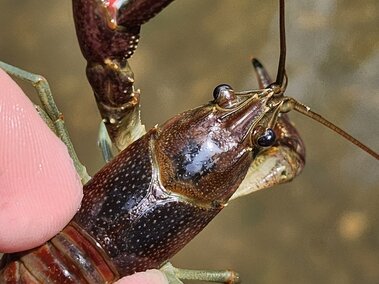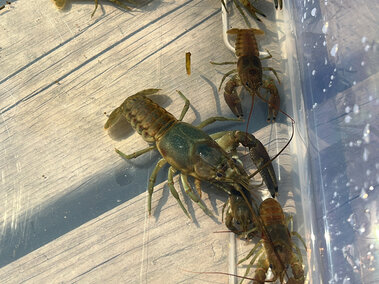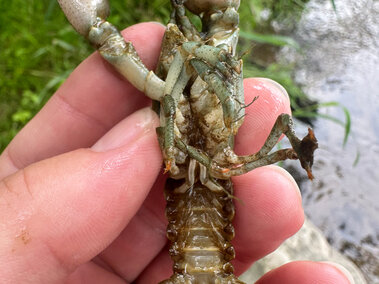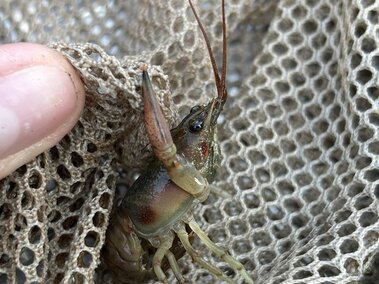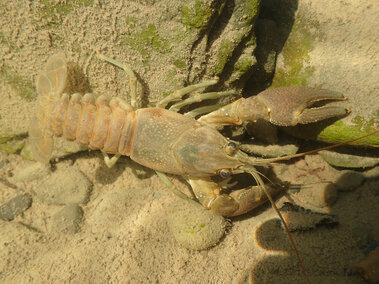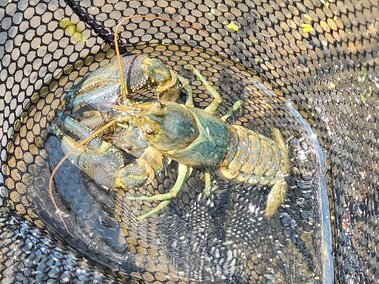General Information
Species Name: Faxonius rusticus
Also Known As: No other names
Family: Cambaridae (Freshwater Crayfish)
Life Span: 3-4 years
Life Cycle: Males and females mate in late summer, early fall, or early spring. Females can lay between 80 and 575 eggs. Eggs hatch in three to six weeks, depending on water temperature. The young stay with the female for several weeks after hatching.
Origin: United States (Ohio River basin, spanning tributaries in Western Ohio, Indiana, Kentucky, and Northern Tennessee; cryptogenic in Lake Erie)
Injurious: No
Category 2: Priority Aquatic Invasive Species
Why Are They Invasive?
The introduction of only one female carrying viable sperm could start a new population. Outside their home range, they are likely to displace native crayfish and reduce aquatic plant abundance and diversity.
What Do They Look Like?
Rusty crayfish are small crustaceans with long antennae, two pincer claws, and eight legs. They grow up to five inches long and their body color varies from light to dark brown. A pair of rust-colored spots may be found on either side of the carapace (hard upper shell), and the claws often have black bands at the tips. When the claws close, there is an oval-shaped gap. Young, small crayfish can be difficult for non-specialists to conclusively identify.
Photos
Where Do They Live?
Rusty crayfish are omnivores, consuming many food sources such as plants, animals, organic material, sediment, etc. They inhabit lakes, ponds, and streams, preferring areas with rocks, logs, or other debris for shelter. Clay, silt, sand, gravel, and rock all serve as suitable bottom types. However, rusty crayfish prefer cobble habitat, which allow them to hide if necessary. They can thrive in areas of high flow or in standing water, but unlike other species of crayfish that can burrow in the sediment when water conditions decline, rusty crayfishes must have clear, well-oxygenated water year-round to survive. They are usually found at water depths < 1 meter, though they have been found as deep as 14.6 meters. Adults typically occupy pool areas of >20 cm depth, while juveniles are usually found in shallower areas (<15 cm depth) bordering stream edges.
How Do They Spread?
Rusty crayfish are native to the United States’ Ohio River Basin. They were likely introduced and spread through the improper use and disposal of live bait. The species is also commonly imported and sold by the aquarium trade, and to schools by biological supply houses, leading to the potential for illegal release into the wild.
How Do I Control Them?
Contact the Nebraska Game and Parks Commission to determine appropriate control methods. To prevent their spread and introduction into your waterbodies:
CLEAN your watercraft, trailer, angling gear and other equipment. Remove all aquatic vegetation and animal species from your equipment.
DRAIN your watercraft at the ramp by removing the boat plug and draining all live wells and ballast tanks.
DRY your watercraft, trailer and other equipment for at least 7 days before visiting another waterbody.
DON'T DUMP BAIT. Dispose of bait by emptying bait buckets on dry land, away from waterbodies or in a trash receptacle. Moving a live organism from one waterbody to another is illegal, even if you are planning to use the organism as bait.
DON'T LET IT LOOSE. Do not release or transport exotic or non-native fish species to new ecosystems. It is unlawful to release any aquatic species into a waterbody other than the one from which it was harvested. Doing so can promote the spread of AIS.
What Should I Do If I See Them in Nebraska?
If you see rusty crayfish in Nebraska, you should report them to the Nebraska Game and Parks Commission's Aquatic Invasive Species (AIS) Program using their AIS Report Form. For guidance on what information to include in your report, check out our reporting tips.
References and More Information
Center for Invasive Species and Ecosystem Health
Illinois Department of Natural Resources
Midwest Invasive Species Information Network
Minnesota Department of Natural Resources
Nebraska Game and Parks Commission
Smithsonian Environmental Research Center
Summary of Species Currently Listed as Injurious Wildlife under (18 U.S.C. 42) Lacey Act
University of Minnesota Extension
